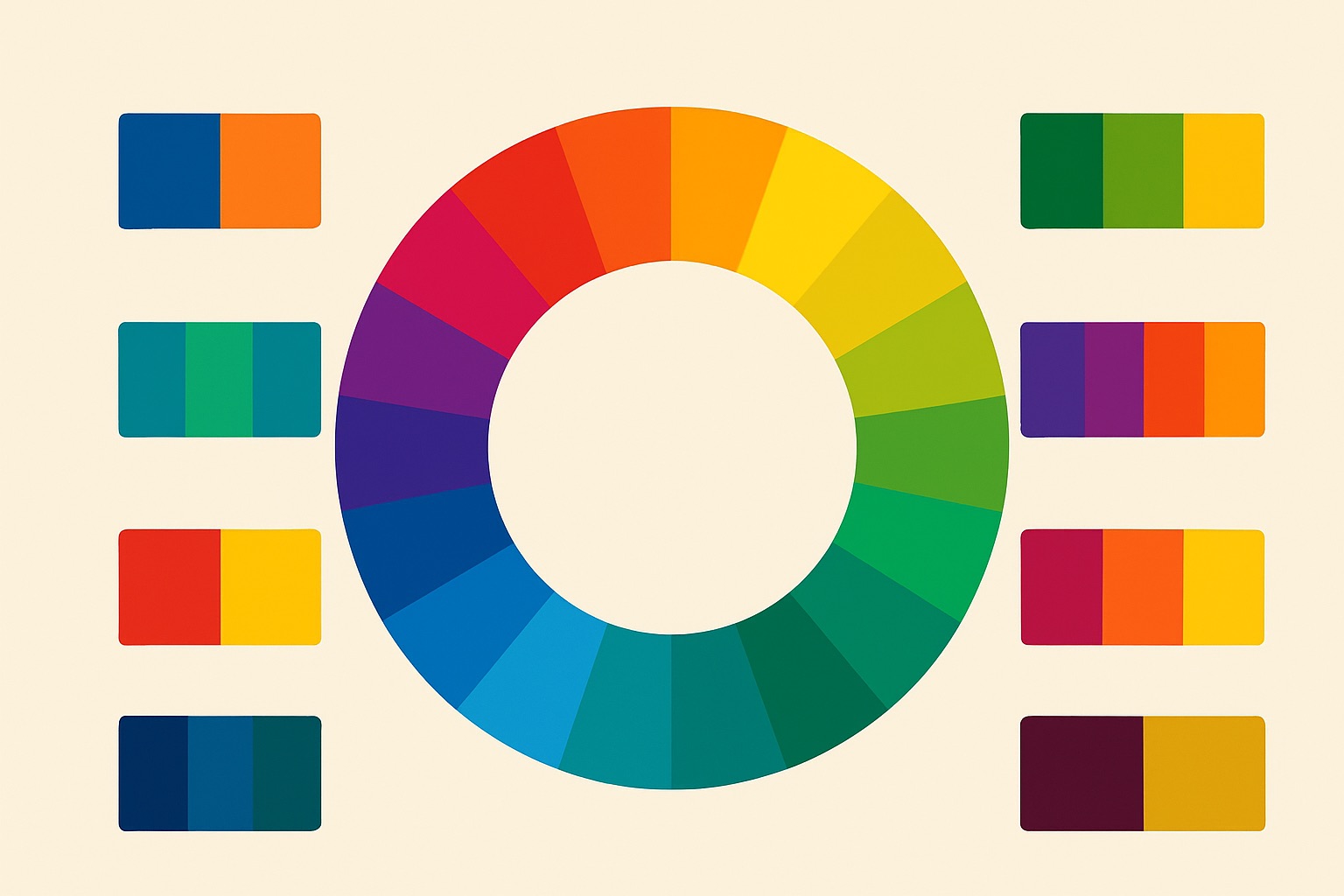
The Science of Color Combinations: How to Pick Harmonious Colors
by ColorSift Editorial Team
Color isn’t just decoration—it’s communication. Designers get this instinctively. A single shade can shift a whole mood, change the hierarchy of a layout, or completely alter how a viewer feels.
But what separates a color combination that feels effortlessly balanced from one that just… doesn’t? The answer lies somewhere between science, psychology, and gut instinct.
Why Our Eyes Crave Harmony
Ever noticed how your brain relaxes when colors feel “right”? That’s not coincidence—it’s biology.
Our eyes interpret light waves, and when certain wavelengths appear together, the brain perceives balance. Others cause tension.
That’s why muted blues and soft creams calm us, while fluorescent red next to green can make us feel… uneasy. Harmony isn’t just about aesthetics—it’s a form of visual comfort.
The Color Wheel: More Than a Pretty Circle
Let’s be honest—every designer has seen a color wheel, but few actually use it consciously. Yet, it’s one of the simplest tools for achieving balance.
- Complementary (opposite sides): Blue and orange, red and green. Think of bold contrast and energy.
- Analogous (neighbors): Blue, teal, green. Smooth and cohesive.
- Triadic (three equally spaced): Red, yellow, blue. Balanced, lively, and reliable.
- Monochromatic (one hue, many tones): Calm, refined, timeless.
Choosing between them depends less on “rules” and more on what you want your viewer to feel. A triadic scheme might scream confidence, while an analogous one whispers elegance.
Color Psychology: What Hues Whisper
Colors carry emotional baggage. Whether we realize it or not, we’re all fluent in this unspoken language.
- Red + Black — Power, luxury, intensity. Used by fashion houses for a reason.
- Blue + White — Calm, trust, and clarity. Think hospitals and tech brands.
- Yellow + Gray — Cheerful meets practical. (Pantone nailed this in 2021.)
- Purple + Gold — Royalty, mystery, depth.
Cultural context matters too—white means purity in some places, mourning in others. The point? Know who you’re designing for. Harmony isn’t universal; it’s contextual.
The Measurable Side: Contrast Ratios Matter
Harmony feels emotional, but it’s also math.
Digital designers, especially, can’t skip contrast ratios—the backbone of accessibility. According to the WCAG guidelines, text should meet at least a 4.5:1 contrast ratio against its background.
Good design is one that looks beautiful and works for everyone. If your colors clash in grayscale, they’ll likely fail the accessibility test too.
How to Choose Harmonious Colors (Without Losing Your Mind)
Here’s the thing—color theory sounds intimidating, but you don’t need to overthink it.
A few simple steps can make your palette sing:
- Pick one anchor color. Your hero hue should guide the rest.
- Add 2–3 supporting tones. Enough for depth, not confusion.
- Use the 60–30–10 rule. 60% base, 30% secondary, 10% accent.
- Test in grayscale. It reveals imbalances instantly.
- Experiment digitally. Tools like ColorSift, Adobe Color, or Coolors make it effortless.
The key? Keep playing until something feels right. Intuition is just practiced pattern recognition.
When Harmony Isn’t the Goal
Here’s a secret: disharmony can be intentional.
Designers often use clashing colors to provoke, disrupt, or challenge norms. Think punk zines, protest posters, or certain fashion editorials.
Breaking rules works best when you know what rules you’re breaking.
A color palette doesn’t have to “match” to be memorable—it just needs to make sense for the message.
Real-World Examples
- Spotify – Acid green and deep black. Unexpected, instantly recognizable.
- IKEA – Blue and yellow. High contrast, optimistic, distinctly Scandinavian.
- Minimalist branding – Monochrome neutrals plus a pop of bold. Quiet sophistication.
Each tells a story. None rely on randomness.
Final Thoughts
Color harmony isn’t about perfection—it’s about intention.
You can spend hours studying theory, but at some point, your gut will guide you better than any chart.
The science of color gives you the rules; creativity teaches you when to ignore them.
So, whether you’re building a brand identity, a website, or your next art piece—trust your instincts, test your contrasts, and remember: harmony doesn’t always mean safe.